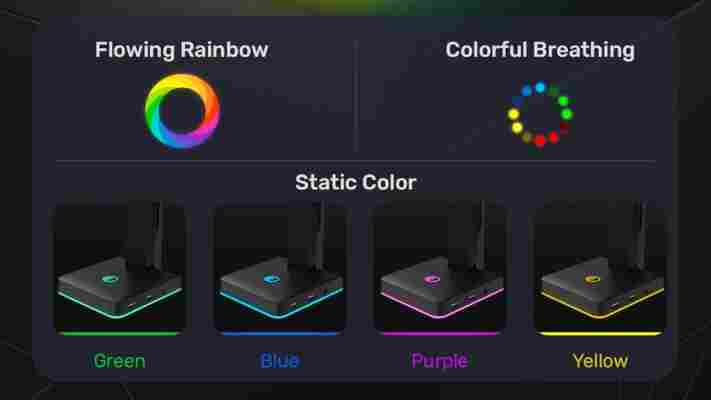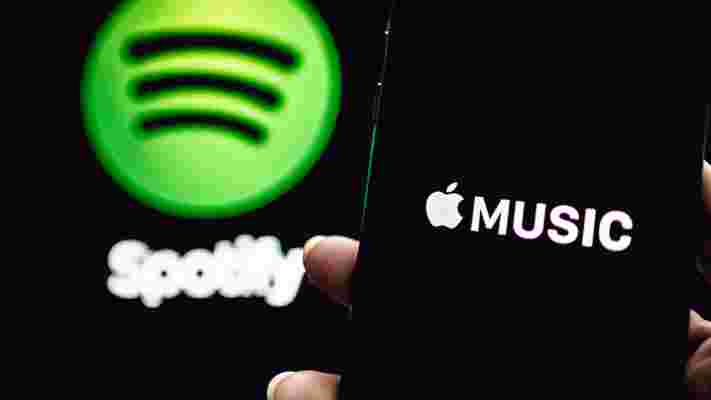Gaming accessories such as keyboards, headsets and controllers have changed a fair bit over the last few decades, not only to offer better ergonomics and features, but also to keep up with current style trends.
One of the more prevalent phrases you might see thrown around is 'RGB lighting' as having colorful LED lights across your setup has become more popular, but there are some unfortunate traps that you might fall into if you're not paying attention.
Let me explain. 'RGB' stands for 'Red Green Blue', a type of color space used in additive color synthesis across displays to create a huge spectrum of other colors by using a mix of red, green, and blue LED lights. LEDs first became available in the 1960s in red, and eventually followed by green and then orange/yellow, but it wouldn't be until much later that the ability to create other colors was developed.
The inventor of Blue LED (which finally arrived in the 1990s) was awarded a Nobel prize in 2014 as blue was the final color required to make almost any color when mixed alongside other LEDs. This revolutionized technology in things like TVs and computer screens, but we can also see this applied in other areas, such as color-changing light bulbs from brands like Philips Hue .
In the world of gaming peripherals and accessories though, RGB has also become associated with flashy rainbow lights that can sometimes be customized to match your existing setup. If your gaming keyboard has a backlight that switches between a specific shade of green and blue, you could also extend this across other RGB-capable peripherals like your gaming mouse or even within the PC build itself.
This customization is prevalent across many of the well-recognized gaming brands such as Razer, MSI and Asus, all of which have software available such as Razer Chroma, MSI Mystic Light and Asus Aura that can be used to sync your choice of lighting style and effects across the rest of your peripherals, providing they're compatible with the same software.
What to look out for when buying RGB products

Thing is, just because something is labeled as an 'RGB' capable product, doesn't mean you're getting that customization capability, and it's possible that some manufacturers and retailers are using this as a loophole to catch out unsuspecting consumers.
In most cases, you're still getting the recognizable flowing rainbow lights, but without appropriate software to control them or alter the color beyond presets that are built into the product itself. If you purchased, say, a new headset stand with built-in RGB lighting for example, you might not be able to configure it to match the rest of your gaming PC.

In the case of the above image taken from an IFYOO RGB Gaming Headset Stand listing, the brand has been very forward with the limitations of the product, and the information is also clear on the product description, with only four color presets available. If you wanted the headphone stand to display a pink or orange light, it doesn't have that capability. Still, there are many, many more listings online where this information isn't clearly available, either tucked away in some small print or the product description or in some cases, not available on the listing at all.
There are also instances where a product will be listed with the phrase 'customizable RGB' when in reality, this customization is limited to switching between manual presets. You might feel lied to if a product arrived and didn't have the features you were expecting, but as long as the purchase uses the RGB color model then the seller isn't doing anything wrong.
How to not get caught out

There are a few easy ways to avoid disappointment thankfully. If you already have a branded peripheral from one of the brands we mentioned earlier like Razer and Asus, it's likely that other peripherals from that company that are labeled as RGB will also follow the same customization, so if you want a new gaming mouse that has lighting that can sync to your existing Razer keyboard, just look to buy a Razer mouse. That said, these brands can be pretty expensive, so if you're low on funds and want to have the same customization features then you might not want to drop a stack of cash on a premium-branded gaming accessory. Luckily, there are other branded accessories that might work alongside your existing hardware.
On listings, look for phrases like 'works with MSI Mystic Light' or whatever other software you're using to manage your RGB lighting. It's unlikely this feature will be hidden away given its potential for marketing, so it shouldn't be hard to find.
Similarly, keep a lookout for the actual lighting capabilities of the product you're looking to buy. In many instances, you're getting the standard flowing rainbow setting and then a handful of solid color options, which should be clearly available on the page. If the product is advertised as 'RGB' but doesn't mention what color presets are available OR what customization and management software it's compatible with, we would suggest that you steer clear.
We should also mention that just because some of these products don't allow full customization, that doesn't make them bad . If you have everything set to the usual rainbow vomit or it comes with a preset color that'd you'd default to anyway then there's no reason for you to avoid them. Just make sure you carefully read all the information available to you prior to making a purchase and avoid assumptions about what RGB lighting actually means on gaming accessories .
Classic Star Wars game gets super pricey special edition – but you get a lightsaber
Lightsaber beat ‘em up Star Wars: The Force Unleashed will release on Nintendo Switch later this month and receive a limited-run physical printing, including a hefty collector’s edition.
The Force Unleashed Nintendo Switch port was first announced by developer Aspyr as a digital release, but video game distributor Limited Run Games has unveiled a physical version that will only be available in restricted numbers. A standard box copy will be available, alongside two special editions.
The Premium Edition includes art cards, a reversible poster, a coin, an enamel pin of holodroid character Proxy, and a steelbook case. That’ll set you back a cool $89.99 – about £69 / AU$120.

But the master edition is the main event. It includes all the goodies of the premium edition, plus a miniature replica of protagonist Starkiller’s lightsaber hilt, a model holocron (those glowing palm-sized cubes that people in the Star Wars universe use to store information), as well as a hardcover strategy guide. The beast will cost you a tidy $174.99 – about £133 / AU$232.
The physical versions of the game will only be available to buy until May 29 this year. They’ll go up for pre-order on April 15, ahead of the game’s release on April 20.

Big money for big nostalgia
If you were obsessed with the Force Unleashed when it was released back in 2008, you might be taken by this huge, limited-printing master edition. But $175 is a lot of dosh to spend on a nearly 15-year-old game, even if it does come with a model lightsaber. Whoever picks up this box must really love the story of Galen Malek.
Expensive collector’s editions are par for the course with video game releases. Horizon Forbidden West ’s Regalla edition cost a neat $270 / £229.99 / AU$360 and included a huge Tremortusk statue and Aloy miniature.
Dying Light 2 similarly launched with a special edition that would set you back $229.99 / £199.99 / AU$399.95 and included a full statuette with in-built UV lighting. Elden Ring , however, blew both of those out of the water with a $259.99 / £229.99 / AU$379 premium edition that included a statue of Malenia, Blade of Miquella and a 1:1 scale replica of her helmet.
The upcoming Star Wars: The Force Unleashed Nintendo Switch port won’t only introduce collectible accouterments. A few new gameplay novelties will take advantage of the console’s Joy-Con motion controls. You’ll be able to unleash a Force Push by waving the left Joy-Con, or throw your lightsaber by wiggling the right. Bring the two controllers together to unleash a storm of Force Lightning, and throw them apart to send the poor stormtroopers flying.
Additionally, a Duel mode will let you battle another player in 1 vs.1 local multiplayer fights. The mode was originally included in the Wii version of The Force Unleashed but didn’t make its way to other versions of the game.
Could Spotify's stance on Joe Rogan cost it listeners?
Spotify is the most popular music streaming platform in the world, having amassed over 523.9 million subscribers by mid-2021. However, the service has been under intense scrutiny in recent weeks, with artists and subscribers boycotting Spotify in protest at its endorsement of controversial podcaster Joe Rogan.
It may have started out as a music service in 2006, but Spotify has been investing heavily in podcasts over the past few years – and since Spotify bought the exclusive rights to distribute The Joe Rogan Experience in 2020 it’s fast become the most popular podcast on the platform.
As popular as it is, The Joe Rogan Experience has been criticized for spreading misinformation around the Covid-19 pandemic, and about the vaccines in particular, which has led to a number of high-profile artists removing their music from the streaming service, most notably Neil Young and Joni Mitchell.
We’ve heard anecdotally that many Spotify fans are looking to other streaming services like Apple Music , Tidal , and Deezer , as a result of the controversy – but will this apparent damage to the company’s reputation really affect Spotify’s 31% market share of the music streaming industry?
What’s happened?
Spotify’s problems began when an open letter to the company urging it to tackle misinformation around the pandemic was signed by over 1,000 health professionals and scientists. The letter cited an episode of The Joe Rogan Experience that featured virologist Dr Robert Malone – someone who had already been banned from Twitter for violating its Covid misinformation policies.
Misinformation is a big concern for those working to tackle the pandemic, as Professor Sander van der Linden, director of the Cambridge Social Decision-Making Laboratory explained to us: “Aside from the virus, I think that one of the most dangerous things about this pandemic is the spread of misinformation, especially insofar it has the ability to influence people’s behavior.”
Researchers at the laboratory found that “the endorsement of misinformation reduces people’s willingness to get vaccinated and recommend the vaccine to others,” which is unlikely to be a stance that Spotify would want to align itself with.

A duty of care?
Whether you feel that Joe Rogan’s podcast is spreading misinformation or not – and its many subscribers prove that plenty of people are perfectly happy with the host and his guests – large and influential platforms like Spotify arguably have a duty to protect users from potentially harmful content.
We spoke to one former Spotify subscriber who felt “disappointed” in the service for not challenging Rogan when Neil Young initially threatened to remove his music from the platform. Sarah Jones, editor-in-chief of PoliticusUSA , told us that she deleted Spotify because she “can’t bear to knowingly share space with a global brand” that she believes is promoting anti-vaxx content.
While she concedes that Spotify’s decision to back Rogan is probably “nothing but business”, the issue is personal for Jones: “My father was radicalized against the Covid vaccines by voices like Joe Rogan [and] my business partner is a high-risk individual whom anti-vaxxers put at risk with their choice to put his and others bodies in jeopardy.”
Spotify has since published its ' platform rules ', the first time it's made public the content guidelines that it upholds for its content creators – both exclusive Spotify partners and any other contributor that shares on the platform. Among these guidelines, there’s a section dedicated to disallowing content that “promotes dangerous false or dangerous deceptive medical information that may cause offline harm or poses a direct threat to public health". We’ve reached out to Spotify for further comment, but so far, the company hasn’t responded.
Rogan himself has responded to the backlash , saying that “I'm not trying to promote misinformation, I'm not trying to be controversial. I've never tried to do anything with this podcast other than just talk to people and have interesting conversations".

Should Spotify be worried?
It’s a highly fraught subject, and one that seems to be dividing the Spotify community into those who feel the platform has neglected its duty of care towards its subscribers, those who feel podcasters like Rogan should be free to say what they like, and those who just want to listen to music and don’t care about the drama surrounding their service of choice.
We hosted a small Twitter poll on the issue, and of 903 respondents, 56% said that they would be “sticking with Spotify”.
Spotify has long dominated the music streaming space, and endured – and survived – controversies in the past. Over the years, several artists have withdrawn their music from Spotify, including The Beatles, Taylor Swift, Jay-Z and Thom Yorke – their reasons for doing so were varied, but Spotify has been criticized in the past for not compensating artists as fully as it could – although, the last time we checked, most of the artists who removed their music in the early days can now be found on Spotify.
Spotify still enjoys far higher subscriber numbers than its biggest competitors, despite rivals like Apple Music and Amazon Music now offering hi-res audio at no extra cost. While the company is set to launch Spotify HiFi , which it says will deliver CD-quality streams (though when that will be exactly still eludes us), it’s never promised to deliver true hi-res audio, despite the growing number of music fans prioritizing higher-quality audio streams in the last few years.
In our minds, Spotify still offers the best user experience out of all the platforms we’ve tested. Its comprehensive catalogue, excellent search function, unbeaten curated playlists, and simple user interface will likely ensure its success for years to come.
However, the subject of misinformation around Covid-19 is an emotive, and often politicized subject. We don’t think Spotify will lose its huge market share, and the publication of its content guidelines will at least give the public an understanding of its standards, but the last few weeks have certainly pushed at least some of its subscribers into the arms of Apple Music, Tidal, and other big competitors – and ultimately that could be good for consumers.
Spotify will need to work hard to redeem itself in the eyes of the subscribers it’s lost, and that might mean an expedited rollout of Spotify HiFi – perhaps even at no extra cost to its Premium subscribers, which would dispel rumors that the company would charge for the privilege of higher-quality audio.
Above all, we hope that Spotify will be more transparent around its content curation and moderation in the future – and while we don’t think it will remove its most popular podcaster in order to appease its detractors, it may take more care to ensure that his content isn’t inadvertently causing harm to listeners.